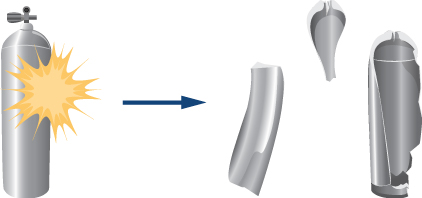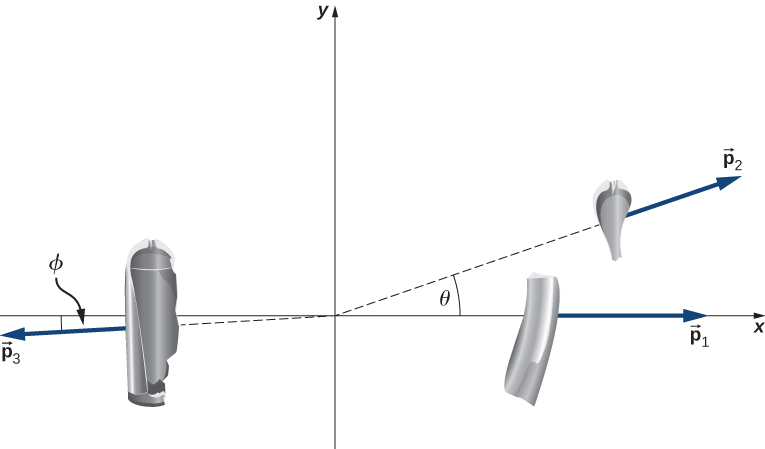| << Chapter < Page | Chapter >> Page > |

We choose a coordinate system where all the motion happens in the xy -plane. We then write down the equations for conservation of momentum in each direction, thus obtaining the x - and y -components of the momentum of the third piece, from which we obtain its magnitude (via the Pythagorean theorem) and its direction. Finally, dividing this momentum by the mass of the third piece gives us the velocity.
Now apply conservation of momentum in each direction.

x -direction:
y -direction:
From our chosen coordinate system, we write the x -components as
For the y -direction, we have
This gives the magnitude of :
The velocity of the third piece is therefore
The direction of its velocity vector is the same as the direction of its momentum vector:
Because is below the -axis, the actual angle is from the + x -direction.
Check Your Understanding Notice that the mass of the air in the tank was neglected in the analysis and solution. How would the solution method changed if the air was included? How large a difference do you think it would make in the final answer?
The volume of a scuba tank is about 11 L. Assuming air is an ideal gas, the number of gas molecules in the tank is
The average molecular mass of air is 29 g/mol, so the mass of air contained in the tank is about 2.2 kg. This is about 10 times less than the mass of the tank, so it is safe to neglect it. Also, the initial force of the air pressure is roughly proportional to the surface area of each piece, which is in turn proportional to the mass of each piece (assuming uniform thickness). Thus, the initial acceleration of each piece would change very little if we explicitly consider the air.

Notification Switch
Would you like to follow the 'University physics volume 1' conversation and receive update notifications?